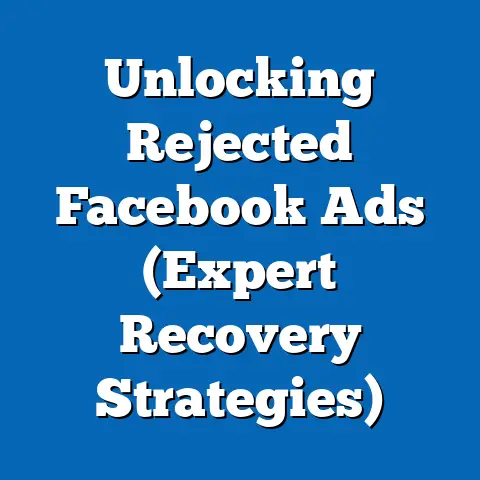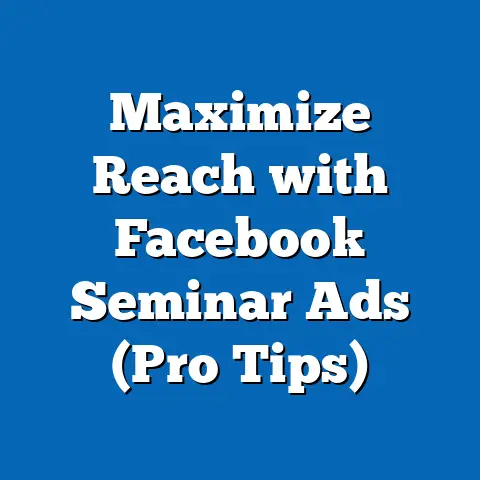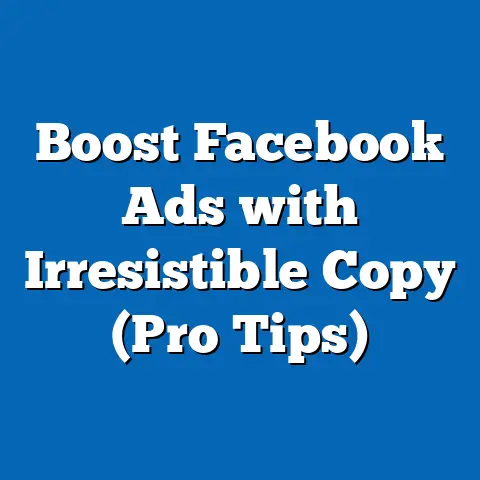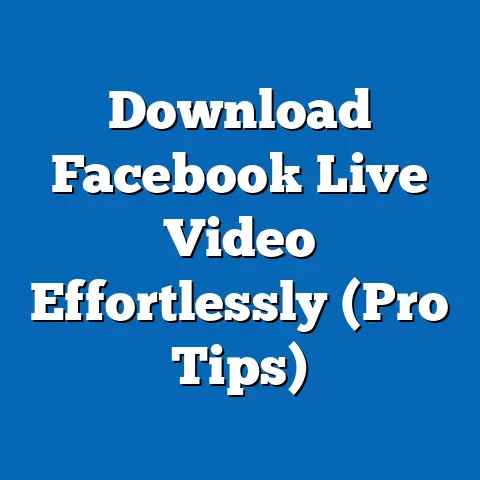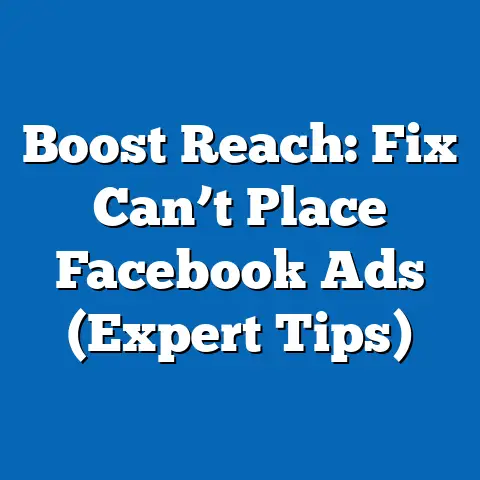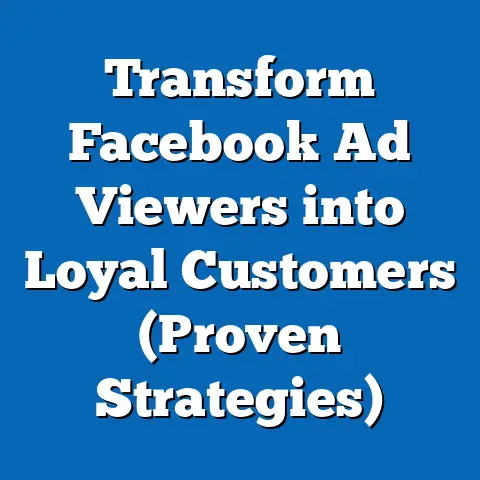Unlock 100,000 Subscribers with Facebook Ads (Proven Strategies)
In today’s cutthroat digital arena, building a substantial subscriber base is no longer a luxury – it’s a necessity. Think of it as laying the foundation for a skyscraper: without a solid base, you can’t reach those lofty heights. For businesses yearning to amplify their reach, engagement, and ultimately, their bottom line, a robust subscriber list is the golden ticket. But let’s face it, organic growth can feel like watching paint dry. What if I told you there’s a way to fast-track your subscriber acquisition and potentially hit that impressive 100,000 mark?
Enter Facebook Ads. I’ve seen firsthand how a well-crafted Facebook Ads strategy can act as a catalyst for exponential subscriber growth. I remember working with a small e-commerce business selling handmade jewelry. They were struggling to gain traction, their email list stagnant. After implementing a targeted Facebook Ads campaign featuring a free shipping code for new subscribers, they saw their subscriber count jump by 300% in just a few months! It was a game-changer for them, and it can be for you too.
Understanding the Facebook Ads Ecosystem
Facebook Ads has evolved from a simple advertising platform to a sophisticated marketing powerhouse. It’s no longer just about throwing money at an ad and hoping for the best. To truly succeed, you need to understand the key components that make up the Facebook Ads ecosystem.
Think of it as a finely tuned engine. Each part plays a crucial role in driving results:
- Targeting Options: This is where the magic happens. Facebook’s granular targeting allows you to reach specific demographics, interests, behaviors, and even custom audiences based on your existing customer data.
- Ad Formats: From single image ads to video ads, carousel ads, and lead generation forms, Facebook offers a diverse range of ad formats to capture attention and drive engagement.
- Budgeting: You have complete control over your ad spend, setting daily or lifetime budgets to ensure you stay within your financial constraints.
- Placements: Choose where your ads appear – Facebook Feed, Instagram Feed, Audience Network, Messenger – to maximize visibility and reach your target audience effectively.
According to Statista, Facebook boasts over 2.9 billion monthly active users as of 2024. That’s a massive pool of potential subscribers just waiting to be tapped into. What’s even more compelling is the platform’s diverse demographic makeup. Whether you’re targeting millennials, Gen Z, baby boomers, or a niche audience with specific interests, chances are they’re on Facebook. Understanding this potential is the first step towards unlocking exponential subscriber growth.
Takeaway: Facebook Ads is a powerful tool for subscriber acquisition. Understanding its key components and the platform’s vast user base is crucial for creating effective campaigns.
Defining Your Target Audience
Before you even think about crafting your ad copy or designing your visuals, you need to have a crystal-clear understanding of who you’re trying to reach. Imagine trying to sell snow to Eskimos – it’s a recipe for disaster. Defining your target audience is paramount because it ensures your message resonates with the right people, leading to higher engagement and ultimately, more subscribers.
I’ve seen countless businesses waste valuable ad spend by targeting too broadly. They end up reaching people who simply aren’t interested in their product or service, resulting in low conversion rates and a depleted budget. Don’t make the same mistake!
Here are some methods I use to research and create detailed buyer personas:
- Facebook Audience Insights: This free tool provides valuable data about your target audience, including demographics, interests, behaviors, and page likes. Use it to uncover hidden insights and refine your targeting.
- Customer Surveys: Directly ask your existing customers about their needs, pain points, and preferences. This invaluable feedback can help you create more relevant ad copy and offers.
- Website Analytics: Analyze your website traffic to identify the demographics and interests of your visitors. This data can inform your Facebook Ads targeting strategy.
- Competitor Analysis: Research your competitors’ target audience to identify potential opportunities and avoid targeting the same saturated segments.
For instance, if you’re selling organic skincare products, your buyer persona might be a health-conscious woman aged 25-45, interested in natural living, beauty, and sustainable products. Knowing this, you can target Facebook users who like pages related to organic food, yoga, and eco-friendly brands.
Precise targeting is the key to unlocking higher engagement and conversion rates. By focusing your ad spend on the individuals most likely to be interested in subscribing, you’ll see a significant improvement in your ROI.
Takeaway: Don’t skip the crucial step of defining your target audience. Use the methods outlined above to create detailed buyer personas and ensure your ads resonate with the right people.
Crafting Compelling Ad Copy and Visuals
Now that you know who you’re talking to, it’s time to craft ad copy and visuals that grab their attention and compel them to subscribe. Think of your ad as a digital billboard – you have a limited amount of time to make a lasting impression.
Effective ad copy is clear, concise, and speaks directly to the needs and pain points of your target audience. It should highlight the value proposition of subscribing and create a sense of urgency.
Here are some tips I’ve learned over the years:
- Focus on the Benefits: Instead of just listing features, emphasize the benefits of subscribing. What will your audience gain by joining your list? Will they receive exclusive discounts, early access to new products, or valuable insights?
- Use Strong Calls to Action: Tell people exactly what you want them to do. Use clear and compelling calls to action like “Subscribe Now,” “Get Your Free eBook,” or “Join Our Community.”
- Create a Sense of Urgency: Use language that creates a sense of urgency and encourages immediate action. Words like “Limited Time Offer,” “Exclusive Access,” or “Don’t Miss Out” can be highly effective.
- Keep it Concise: People have short attention spans, so keep your ad copy brief and to the point. Get your message across quickly and effectively.
Visuals are equally important. Eye-catching images and videos can stop people in their tracks and draw them into your ad.
Here are some tips for creating effective visuals:
- Use High-Quality Images: Avoid blurry or pixelated images. Use professional-quality photos or videos that showcase your brand and product in the best light.
- Grab Attention: Use bright colors, bold graphics, and compelling imagery to capture attention.
- Showcase Your Value Proposition: Your visuals should clearly communicate the value proposition of subscribing.
- Maintain Brand Consistency: Ensure your visuals are consistent with your brand’s overall aesthetic.
Let’s look at a few examples:
- Example 1: Fitness App: Ad copy: “Get Fit & Healthy with Our Free 7-Day Trial! Subscribe Now and Unlock Exclusive Workout Plans & Nutrition Guides.” Visual: A vibrant image of someone working out and smiling.
- Example 2: Online Course: Ad copy: “Master a New Skill in 30 Days! Subscribe to Our Newsletter for a Free Course Sample & Exclusive Discounts.” Visual: A visually appealing graphic showcasing the course content.
Takeaway: Craft compelling ad copy and visuals that resonate with your target audience, highlight the value proposition of subscribing, and create a sense of urgency.
Utilizing Lead Magnets
Lead magnets are irresistible incentives that you offer in exchange for a user’s email address. Think of them as the “bait” that lures potential subscribers into your funnel. They’re a crucial component of any successful subscriber acquisition strategy.
I’ve found that the most effective lead magnets are highly relevant to your target audience and provide immediate value. They should be something that your audience genuinely wants and needs.
Here are some popular types of lead magnets:
- eBooks: Offer a free eBook on a topic related to your industry or product.
- Webinars: Host a free webinar on a valuable topic and require registration with an email address.
- Discounts: Offer a discount code for first-time subscribers.
- Exclusive Content: Provide access to exclusive content, such as templates, checklists, or guides.
- Free Trials: Offer a free trial of your product or service.
When creating your lead magnet, keep the following in mind:
- Relevance: Ensure your lead magnet is highly relevant to your target audience.
- Value: Provide real value that your audience will appreciate.
- Accessibility: Make it easy for people to access your lead magnet.
- Quality: Ensure your lead magnet is well-written, well-designed, and free of errors.
For example, a software company might offer a free trial of their product as a lead magnet. A marketing agency might offer a free audit of a website’s SEO. A fashion retailer might offer a discount code for first-time subscribers.
I worked with a local bakery that was struggling to build their email list. We created a lead magnet offering a free recipe eBook featuring their most popular desserts. The Facebook Ads campaign targeting local foodies was a huge success, resulting in a significant increase in their subscriber count.
Takeaway: Lead magnets are essential for attracting subscribers. Offer irresistible incentives that provide real value to your target audience.
A/B Testing and Optimization
No matter how well you plan your Facebook Ads campaign, there’s always room for improvement. That’s where A/B testing comes in. A/B testing involves creating two versions of your ad – A and B – and testing them against each other to see which performs better.
I consider A/B testing to be the lifeblood of any successful Facebook Ads campaign. It allows you to continuously refine your strategy and optimize your results.
Here’s a step-by-step guide on how to conduct A/B tests:
- Identify a Variable: Choose a specific element of your ad to test, such as the headline, image, call to action, or audience segment.
- Create Two Versions: Create two versions of your ad, each with a different variation of the variable you’re testing.
- Run the Test: Run both ads simultaneously, ensuring they have the same budget and targeting.
- Analyze the Results: After a sufficient amount of time, analyze the results to see which ad performed better.
- Implement the Winner: Implement the winning ad and continue testing other variables.
For example, you might test two different headlines to see which one generates more clicks. Or you might test two different images to see which one captures more attention. Or you might test two different audience segments to see which one is more responsive.
When analyzing your A/B testing results, pay attention to the following metrics:
- Click-Through Rate (CTR): The percentage of people who saw your ad and clicked on it.
- Conversion Rate: The percentage of people who clicked on your ad and subscribed.
- Cost Per Acquisition (CPA): The cost of acquiring one subscriber.
By continuously A/B testing and optimizing your Facebook Ads, you can significantly improve your performance and drive down your costs.
Takeaway: A/B testing is crucial for refining your ad strategies and optimizing your results. Continuously test different elements of your ads to see what works best.
Scaling Your Campaigns
Once you’ve achieved initial success with your Facebook Ads campaign, it’s time to scale up and accelerate your subscriber growth. Scaling your campaigns involves increasing your budget, diversifying your ad formats, and expanding your target audiences.
I’ve found that the key to scaling successfully is to do it gradually and monitor your results closely. Don’t just double your budget overnight – that can be a recipe for disaster.
Here are some strategies for scaling your Facebook Ads campaigns:
Remember, scaling your campaigns requires continuous monitoring and adaptation. Keep a close eye on your performance metrics and make adjustments as needed to maintain your subscriber growth.
Takeaway: Scaling your Facebook Ads campaigns involves increasing your budget, diversifying your ad formats, and expanding your target audiences. Monitor your results closely and make adjustments as needed.
Conclusion
Achieving 100,000 subscribers with Facebook Ads is an ambitious goal, but it’s definitely within reach. By understanding the Facebook Ads ecosystem, defining your target audience, crafting compelling ad copy and visuals, utilizing lead magnets, A/B testing and optimizing your campaigns, and scaling your efforts strategically, you can unlock exponential subscriber growth.
Remember, it’s not about overnight success. It’s about consistent effort, continuous learning, and a willingness to adapt your strategy based on the data.
So, what are you waiting for? Take the strategies outlined in this guide and start your journey toward subscriber growth today! The potential is there, and with the right approach, you can transform your Facebook Ads campaigns into a powerful subscriber acquisition engine. Now go out there and make it happen!

